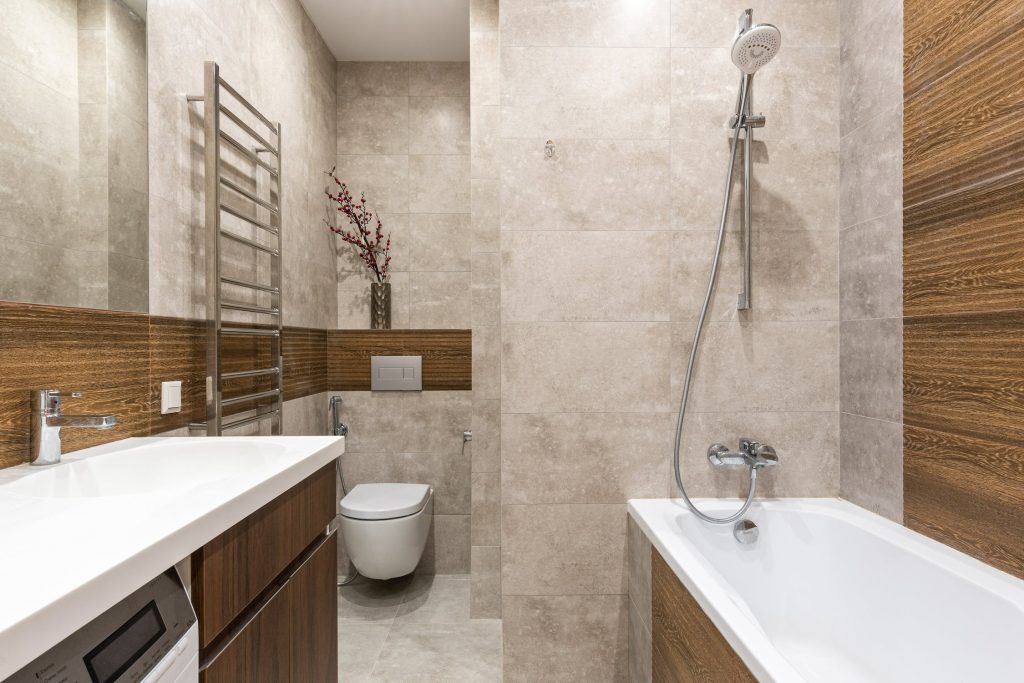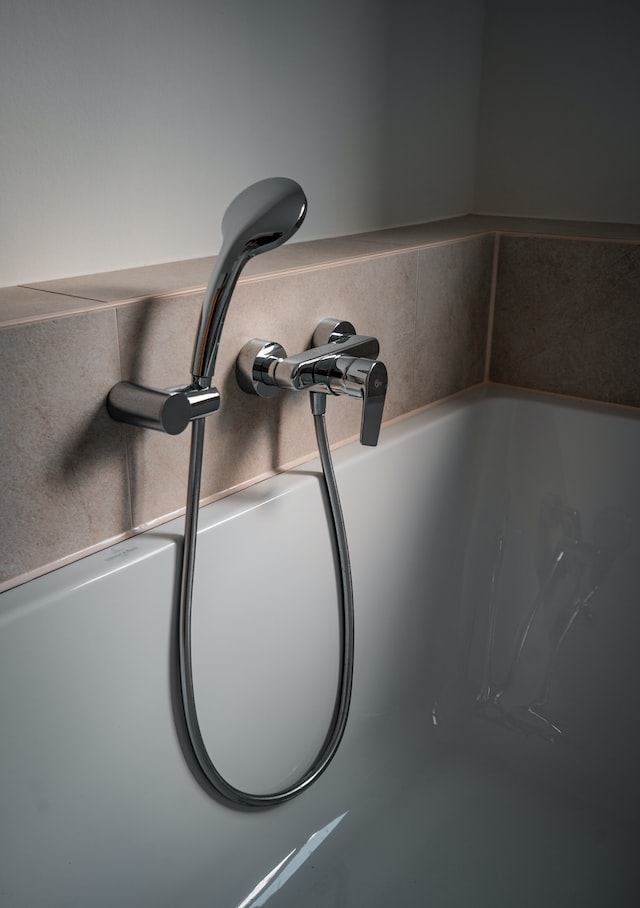The benefits of a handheld shower head are myriad, and it’s no wonder that the trend is on the rise in homes across the country. Whether you want to make your shower more comfortable, save water or simply enjoy a better bathing experience, handheld shower head options are a great way to get the job done. Handheld shower heads not only are more convenient but also offer a wide range of benefits that you won’t find with a traditional shower head.
Especially when combined with a bathtub, handheld shower heads can help create an excellent bathing experience. It is no doubt that a good soak in a tub is relaxing, but throwing in a hand held shower head feature will open up a whole other level of enjoyment and relaxation. Furthermore, adding a hand shower for bathtub allows for added convenience when bathing, making it not just more relaxing but also more refreshing.
But with all the benefits of a handheld shower head, is it worthwhile to attach a handheld shower to a bathtub?

- Why install a handheld shower head in a bathtub?
- Tools/materials needed
- 8 Steps on How to Add a Handheld Shower head to a Bathtub
Why install a handheld shower head in a bathtub?
As you might imagine, there are a number of reasons to install a handheld shower head in your bathtub. The benefits of a handheld shower head carry over to bathtubs and can make your bathing experience more relaxing, enjoyable, and convenient. The best part is that you don’t have to sacrifice quality for convenience when installing a handheld shower head in your bathtub. With the right features and design, you can have both. Here are some great benefits of hand held shower heads.
More precise washes
Regular stationary shower heads mean that they are fixed in a single position, which can make it difficult to wash specific or hard-to-reach areas on the body. With handheld shower heads, maneuvering the flexible and extendable hose helps eliminate this issue and results to more precise and effective washes.
Family-friendly
Handheld shower heads are more convenient than fixed shower heads, making them great for households since they are suitable for just about everyone in a family. The option of being able to maneuver the shower head is especially suitable for young children and the elderly since it can greatly enhance the showering experience by precisely washing what needs to get washed.
Convenient cleaning
Speaking of washing what needs to get washed, a bathtub and shower need to be cleaned every now and then, which is made much easier with handheld shower heads. Handheld shower heads can be used to more effectively wash and cleanse bathing areas. With the option to aim and release water flow wherever the process of cleaning showers and bathtubs becomes much easier and quicker.
Improves low-pressure showers
Especially for those that constantly nag about low water pressure in the shower, a handheld shower head could be the perfect solution. The showering experience can be greatly enhanced by maneuvering the shower head closer to the body. The option of being able to control the distance and direction of the shower head’s water flow is sure to result in a refreshing bath.
Pet baths and grooming
Handheld shower heads are also great for washing pets. Since pets can sometimes be just as difficult to wash and bathe as young children, handheld shower heads offer a great amount of flexibility for getting the job done. Not only do hand held showers fit the task of washing and bathing pets, but they also make it much easier and more efficient.
However, if you have a bathtub and want to add a handheld shower head, it can be a bit of a challenge if you have no idea what to do. Luckily, it’s not terribly difficult to add a handheld shower head to a bathtub. You just need to know how it all works, what you’ll need, and how to install the components, including how to install shower head with hose properly.
This article goes over steps on how to add a handheld shower head to a bathtub. But first, let’s cover some of the tools and materials needed throughout the installation process.
Tools/materials needed
- Handheld shower head
- shower head holder/slide bar
- Faucet adapter
- Diverter
- Drill/drill bits
- Screwdriver
8 Steps on How to Add a Handheld Shower head to a Bathtub
With the proper tools and the right steps, installing a handheld shower head in a bathtub is a simple and quick process. Here are the 8 steps you should follow on how to add a handheld shower head to a bathtub:
Step 1: Unscrew the aerator from the bathtub faucet.
Before you begin, make sure the water is turned off. Hold your bathtub faucet in one hand and use a wrench to unscrew the aerator from it (or you can do this by hand).
The aerator is simply a small piece of hardware that is attached on top of your bathtub faucet and controls how much water comes out when you turn on the tap. The aerator also controls how much pressure there is in the stream of water.
Step 2: Ensure the gasket on the adapter and diverter are compatible.
The gaskets of the adapter and diverter should be compatible and fit together. A loose-fitting gasket will result in a water leak, so make sure you get one that’s right for your system. If not, you’ll need to purchase a new adapter and diverter. Also, ensure the adapter and bath shower attachment are compatible with your faucet.
Step 3: Connect the diverter and adapter.
Next, connect the diverter and adapter. Connecting them can be done by simply twisting the diverter into the adapter through the allotted slot. Make sure that they are snugly fit and secure to ensure against any leaks or malfunctions during use.
Step 4: Install the adapter onto the faucet.
Once you have connected the diverter and adapter, it’s time to put the assembled piece into place. Install the adapter onto the faucet opening by twisting or screwing it into place depending on the type of faucet.
Step 5: Connect the shower head hose to the diverter.
Now you’re ready to connect the bathtub shower head hose to the diverter. First, make sure that the diverter is securely connected to your faucet and isn’t leaking.
Next, attach your handheld shower head hose to the diverter by twisting it into place. If it doesn’t seem like it’s fitting correctly, try turning it one way or another until it fits snugly on top of your faucet.
If there’s any leakage from between where your handheld shower head hose meets up with your sink faucet or wall pipe connection point (if yours has one), tighten those connections until everything is secure and watertight.
Step 6: Connect the hose to a handheld shower head.
After the shower head hose and adapter are in place, it’s time to attach the other end of the hose to a handheld shower head. Considering the shower head for bathtub is a single piece, simply twist it onto the end of your hose.
Step 7: Mount the shower head holder.
The next step is to mount the shower head holder onto your bathtub wall. You can do this yourself by drilling holes or using adhesive, both processes are quick and simple.
Step 8: Put the shower head in its holder.
Now that everything is set, you can try out the shower head holder to see if it holds well and functions as expected. Once you’ve connected everything and made sure it’s secure, your handheld shower is ready to use. You can test its operation with running water or a bath.

Conclusion
Whether you’re looking for a more convenient showering experience or simply want to upgrade your bathroom, a handheld shower head is a great option. It’s easy to add shower to bathtub through this simple guide on how to add a handheld shower head to a bathtub, which can be used by anyone and offers many benefits that make it worth the cost.
FAQ about How to Add a Handheld Shower Head to a Bathtub
A shower diverter is a device that allows you to change the direction of water flow. They come in two main types: those that are attached to the end of your shower head, and those that are attached to the pipe that runs from your shower head to the drain.
If you have a tub-and-shower combo, you may want to consider installing a diverter so that you can control which way water flows through your plumbing.
A diverter valve and a transfer valve are two common types of faucet valves. They both distribute the water supply, but in different ways.
A diverter valve redirects the water supply between the shower or tub, with only one of them having flowing water. This means that if you want to take a shower, you have to use the diverter to redirect the flow of water from your tub to your shower.
A transfer valve distributes the water supply through multiple paths meaning that both your shower and tub have access to water flow. You can use either one for your showering needs.
0 Comments for “How to Add a Handheld Shower head to a Bathtub: A Quick and Easy Guide”